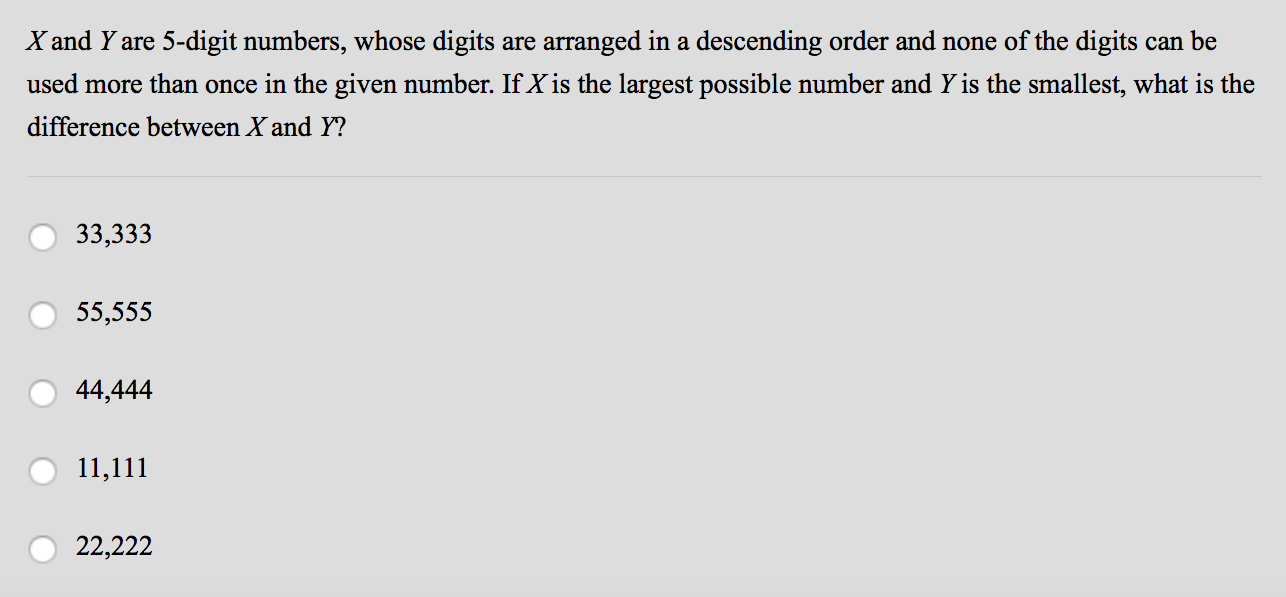Forget complicated calculations!
If you are stuck on a GMAT Math problem because it seems that the needed calculation will take too much time, then your approach towards calculating may be too straightforward. In fact, you will rarely need to do heavy calculation in the GMAT exam. That's one of the things I like this test for.
Take a look at the Math problem below.

The question stem tells us that X is the greatest possible 5-digit number whose digits are arranged in a descending order and none of the digits can be used more than one. So, X = 98765. At the same time, Y is the smallest number with similar properties, so Y = 43210. We need to find the difference between the numbers. Although even the complete calculation does not look time-consuming, you could still save some time by finding the last digit of the needed number: 98765 – 43210 = _ _ _ _ 5. Only one of the numbers given in the answers has 5 as its unit digit. So, pick C and move forward.
Here's another example.

Here, we are asked to find the number that consists of two digits whose sum is 8 and that has the difference of 54 between itself and reversed itself. Instead of trying to create an equation, you should check the answers and see which of the answers can satisfy the condition. The last two numbers must be eliminated because the sum of their digits is not 8. The first two numbers should be eliminated because the reversed number must be bigger than the original number to result in the positive difference of 54. So, C is the correct answer.
by Nataly Linch

Comments:
Log In or Sign Up to leave your comment!